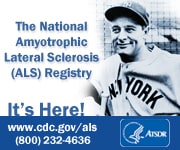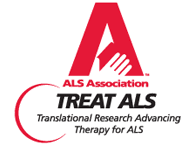As the 70th anniversary of Lou Gehrig’s “luckiest man” speech approaches, I’ve been watching clips of the Iron Horse. Before 2005, I had never really given Lou Gehrig much thought. Baseball wasn’t on my radar growing up in a family of girls, in a small town in
Something happened yesterday when I was watching one of the Gehrig clips. I had seen the clip of him giving his “Luckiest Man” speech, many different times. But I saw a clip where he was talking about something else; he was talking about something ordinary, making a hand gesture that was similar to one I’d seen my husband make many times. It suddenly hit me. This guy, Lou Gehrig, he was a real person. He was a real person that lived life here on this earth, and did the same normal everyday things that my husband and I did. He brushed his teeth, combed his hair, got dressed, and lived a married life. That simple familiar hand gesture finally dissolved the myth. He went from this person in history, this baseball extraordinaire…into this normal guy doing what he loved, who was really good at it. He became real.
Before 2005, ALS-Lou Gehrig’s disease was just a myth to me. Something that was out there, but something I never really knew first hand. And honestly, who wants to know ALS first hand? It’s a horrible disease that steals from people their movement, their breathing, their speaking…all that is slowly, or quickly taken from you until you can’t walk, can’t move your arms, can’t talk, and eventually can’t breathe. This happens while your mind is still sharp as a tack and you become trapped inside this shell of a person that you used to be.
On June 23, 2005, the myth became the reality. My husband was diagnosed with ALS-Lou Gehrig’s disease. Lou Gehrig was no longer just this historical guy who lived briefly and sporadically and in the fringes of our lives. He was now up front and center….standing on our home plate. In the beginning it didn’t seem so bad. My husband has a slow progression of the disease, and it was a couple years before the full impact of the disease hit home. Now we live with wheelchairs, stair lifts, and a dandy white handicap assessable mini van that’s about at the opposite end of the spectrum as you can get from the convertible BMW my husband wanted to drive in retirement. ALS, the reality steals from you in so many ways you never really thought about. Lou Gehrig lives fulltime in our dug out, as good as a guy as he was, his disease presence is just too real now. We don’t like it.
To most people my age, ALS is myth…you read about Lou Gehrig, you see his statistics, he was this baseball player way back in the day, who got a “bad break” being diagnosed with ALS. But come on, Lou Gehrig died 68 years ago. What have we heard about ALS, publicly, out in front of the masses like we hear about cancer, since that time? Not much. That makes ALS seem unreal to people…it’s just this disease that this really great baseball player had, years and years ago. Unless you know someone personally who has ALS, you’ll probably never run across someone who has ALS. The other problem with ALS is, most people who are diagnosed with this disease, die within 2-5 years. It’s a really crummy way to spend the last years of your life, and it takes its toll on those who are left behind in its wake.
Because people die from this disease, because there is no cure, because there is no long term life extending treatment, there are no survivors. Let me repeat that, no one survives ALS. The myth continues because there are no survivors to shout from the rooftops how horrible this disease is, and why we need to rally around, raise money, and find a stinking cure. We need to make aware that this disease can strike anyone, anywhere, at anytime in their life. We need to make aware that this disease is not just “something” named after baseball great Lou Gehrig. We need to make aware that this disease strikes real people; moms, dads, grandparents, sisters, brothers, aunts, uncles, nephews, nieces, baseball players, boxers, football players, soccer players, golfers and veterans.
The urgent thing that needs to be done is make people care about this disease. We need to move it from a myth to a reality. We need to make people realize this could happen to them, happen to their family… normal everyday people who used to be able to brush their teeth, comb their hair, lift a fork, dress themselves, drive, score touchdowns, and swing a bat. All that is lost with ALS and those normal everyday hand gestures need to be remembered when we fight for this disease.
This 4th of July, that can happen. This 4th of July is the 70th anniversary of Lou Gehrig’s “luckiest man” speech. Major league baseball stadiums throughout the country will be commemorating Lou Gehrig’s speech. Major League Baseball is partnering with 4 major ALS groups to raise awareness, and money. These four groups, have all been working, in their own way to try and find an end to this disease. But maybe under Major League Baseball’s umbrella, maybe this fight for awareness will hit home with those in attendance. Maybe someone out there in one of those ballparks will donate THE dollar to find a treatment to slow this rotten disease down. If you can’t make it to the ballpark, or your MLB team is away on the 4th, there are other ways to help.
Maybe on the 70th anniversary of Lou Gehrig’s speech, ALS, the disease, will move from the myth and legend of a great baseball player, to the reality of a cure.
For more information:

















